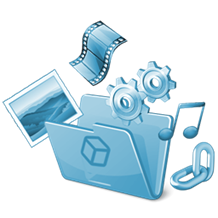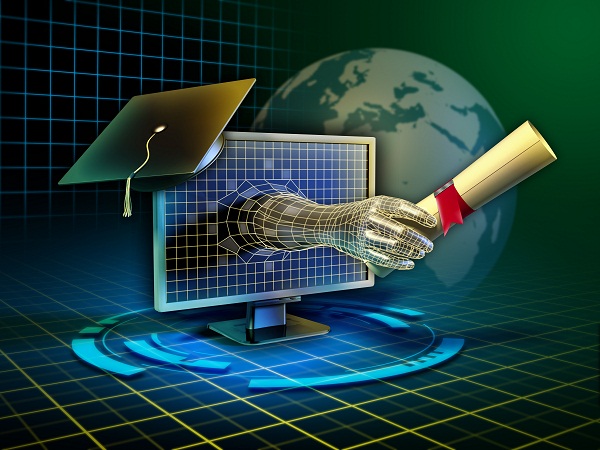Week 5: Current Issues & New Directions
The changing landscape of Instructional Design and Technology (IDT) with new and emerging technologies has the field constantly evaluating the direction for effective instructional design. These emerging technologies are e-learning environments, learning objects, Web 2.0 technologies, rich media, digital games and simulations, and virtual worlds. Three of these emerging technologies are reflected upon and then explored how they may be applied to my current position.
E-Learning
To put a definition on E-learning is difficult because this type of learning involves technology of many sources and methods. E-learning may consist of a hybrid, blended, or distance learning method of instruction and student engagement. The evolution of this learning has transformed from asynchronous to synchronous which providing an opportunity for learners to connect and collaborate ideas. New possibilities for learners to synthesize learning using new technology provides a gateway for students to explore and construct learning.
During the past 5 years, I have had the opportunity to work with a hybrid style of E-learning course using Moodle open source software for Garland Education Online (GEO). This has be a challenge for both teachers and students as the GEO concept has been treated as a distance type of learning tool and not a Learning Management System (LMS). We are slowly seeing how GEO is a supplement and not a replacement to our instruction. Last summer I had the opportunity to create and develop my own course content from the scratch. This has been a true learning experience without any instructional design training. While reading, posting, and commenting through ETEC 561, I have seen how most of my colleagues and I have been using GEO as a “digital locker” to store our assignments and lessons and not as an E-learning platform.
My goal for the upcoming school year is for my student’s learning environment to evolve. The functional architecture for the learning environment will need to increase the collaborations and construction of real-world learning opportunities. The objectives will be to provide students opportunities through relevant instructional technics (reference websites, blogs, animations, e-books, and other rich media) to drive the desired learning outcomes. One of the largest constraints I have encountered in E-learning for my courses is the design, function of the environment, and time. The design has been generic and simplistic at best. As a result of the basic design and nature of the course, I believe the “online” environment is not motivating to students. The aim for my E-learning course will not be simply the medium connecting students to the real-world but rather a launching pad to provide students authentic learning in the outside world.
Web 2.0 Technologies
Connecting students with technology in my classroom is an everyday occurrence. The challenge has been create a two way medium in which the students are collaborating with each other and collectively building knowledge through online communication. I have been toiling with the idea to create a learning environment which fosters student collaboration, construction of knowledge, and take control of their learning. One of the limitations in my classroom for applying Web 2.0 technologies has been the privacy issue and the protective measures the district has in place for students. Using social networks is not possible at this time; however, each student in my class has a district student assigned Google account. Students have limited access to most of the Google products, and next year I plan to have students use Google docs to collaboratively begin the pre-production phase. Google docs allows students to collectively develop a video treatment, script, timeline, shot list, and then allows for sharing and editing of the group developed content.
The other Web 2.0 technology I would like to apply is the use of student created blogs. This would be experimental because of the district’s student privacy policy. I like what we have done in ETEC 561 with our blog posts and comments, and this would be a great opportunity for students to be engaged with technology and facilitate creative student expression. Students would be able to make weekly posts about the week’s activities and/or current project and would have an opportunity to comment and critique their peers by adding comments to other student posts. Lastly, I am interested in browsing through the 3,000 or so Web 2.0 applications indexed at GO2WEB20.net to uncover new and ‘trendy’ applications students are accessing. There just might be many Web 2.0 applications listed students could use for class assignments.
Web 2.0 … The Machine Is Us/ing Us
Rich Media
 Multimedia sources such as audio, video, and animations are examples of rich media to motivate learners interest and enrich the learning. An interesting note about rich media from what Reiser and Dempsey mention in the text is how less is often more effective in the learning process. I had been under the assumption rich media in regards to video can benefit visual learns. As I was progressing through the chapter I was beginning to question the benefit of using video and began pondering how often students are disinterested in the watching educational videos. The learner is passively participant in the instruction. Reiser and Dempsey confirmed my questions to the decreased benefit of using video and rich visuals for learning. I can’t wait to debate the use of rich media and its benefits in the classroom with my colleagues.
Multimedia sources such as audio, video, and animations are examples of rich media to motivate learners interest and enrich the learning. An interesting note about rich media from what Reiser and Dempsey mention in the text is how less is often more effective in the learning process. I had been under the assumption rich media in regards to video can benefit visual learns. As I was progressing through the chapter I was beginning to question the benefit of using video and began pondering how often students are disinterested in the watching educational videos. The learner is passively participant in the instruction. Reiser and Dempsey confirmed my questions to the decreased benefit of using video and rich visuals for learning. I can’t wait to debate the use of rich media and its benefits in the classroom with my colleagues.
It is all to easy to focus instruction on technology and rich media and forget about keeping the learning focused around the learner. I would like to apply rich media such as audio narrations of processes with graphic illustrations to reinforce learning. One application might be to record on-screen activity and add audio narration to guide students through software tutorials. This would be similar to an animation allowing students the ability to pause and repeat segments of the tutorial. A key for this type of animation to be benefit the learner would be to keep is simple and not overload the student with more than one or two processes to learn. Allow the student to understand and also practice the task before moving onto more advanced processes. As with any type of instruction to be successful, it takes time to create lessons that engage the learner and keep it learner-centered. This is a goal of mine for next school year to create short animations using Camtasia software to teach students the different tools of video editing software they will be using. Students would be able to access these animations on GEO (Garland Education Online using the Moodle platform).
Learning Goals Using Technology
Current Issues in Instructional Design and Technology
E-learning must be planned and well thought out about who the users will be and the diversity of the learners. It is all too easy to assume everyone learns and acquires knowledge in the same fashion. A challenge for E-learning is providing multiple sources of technology to assist a diverse group of learners from auditory, visual, and kinesthetic. The designer must be aware to create learning opportunities that are accessible by all learners. This can be challenging when trying to identify design solutions and any adaptations (text reading software, magnification devices, close captioning adaptive pointing devices, and modified assessments) needed for learners with disabilities. The universal design (UD) should allow learners to access the learning from multiple mediums and methods if necessary. Another barrier for technology in E-learning is not only the multiculturalism of our society but also the socioeconomic status of the learner. Every learner may not have access to technology outside of the school setting or the technology may not be adequate to complete the learning process.
Technologies dealing with Web 2.0 have an ethical position to be aware of when related to youth today. Web 2.0 technology has become very popular with today’s students. Unfortunately, students do not always understand the ethical issues this type of technology presents. Instructional designers should be aware of the technology and the age of the student. This can be a great learning opportunity for designers to build into the instruction the proper methods and uses for Web 2.0 technologies. This technology can enhance learning as student collaboration may not be face-to-face. Students with disabilities and cultural differences may develop confidence, social skills, and opportunities needed interact with other students. Another ethical issue raised with Web 2.0 technologies is the privacy of students as minors and the easy of copyright violations. Other methods to connect and share information must be made possible as not all students have technology tools to access Web 2.0 technologies. It is easy to get caught up in the excitement of the 3,000+ applications available. What a power learning opportunity for students to understand the power and dangers of Web 2.0 technologies.
The use of rich media in the class room and instructional design should be used carefully as part of learning. Rich media’s potential to overload a student’s cognitive load is always a concern and more so because of the multiculturalism of schools today. There may be a language barrier when viewing rich media and the ability to process the English language efficiently. Another concern would be for visual and/or hearing impaired students with the inability to make a connection with audio narration and still/video images. Instructional designer should always remember today’s students are diverse in physical abilities, culture, mobility, cognitive, and socioeconomically. Not accounting and incorporating diversity into instructional design can present ethical difficulties in the future for the designer.
Resources:
Hastings, Robin. Web 2.0 Technology. Digital image. MOREnetworking. The Curators of the University of Missouri, 8 Nov. 2007. Web. 2 July 2013. <http://members.more.net/stories/missouri-river-regional-library-embraces-web-20>




